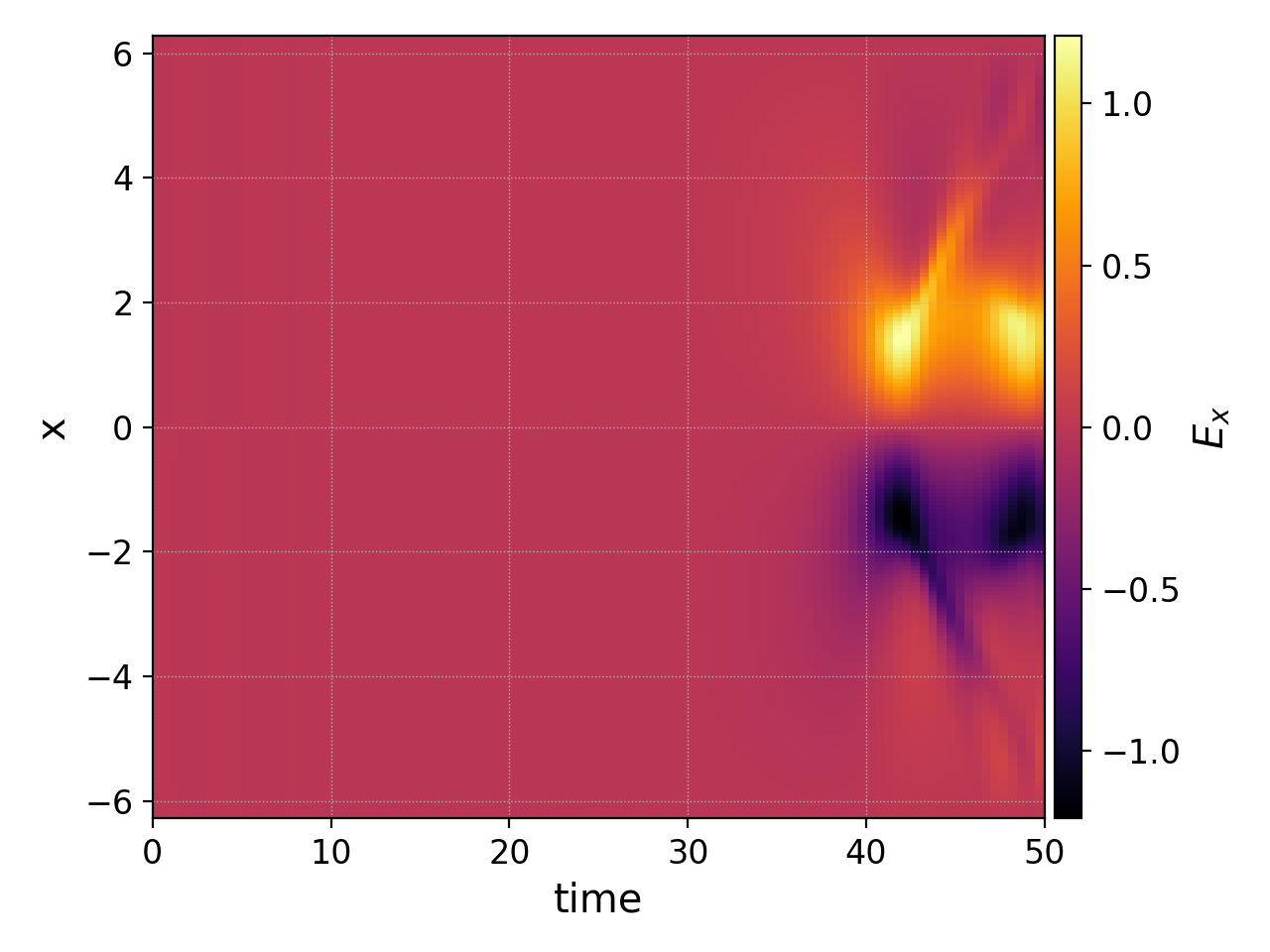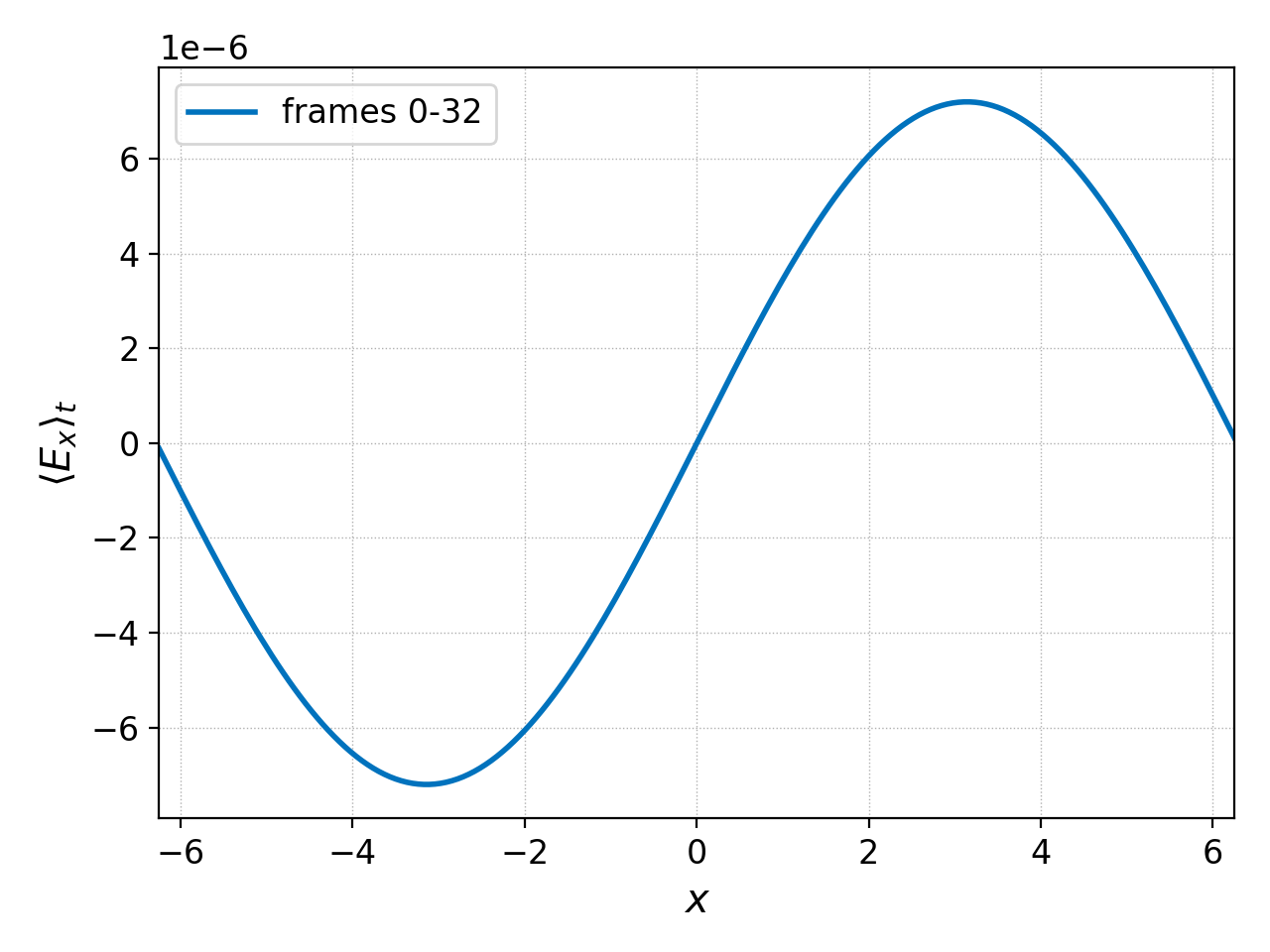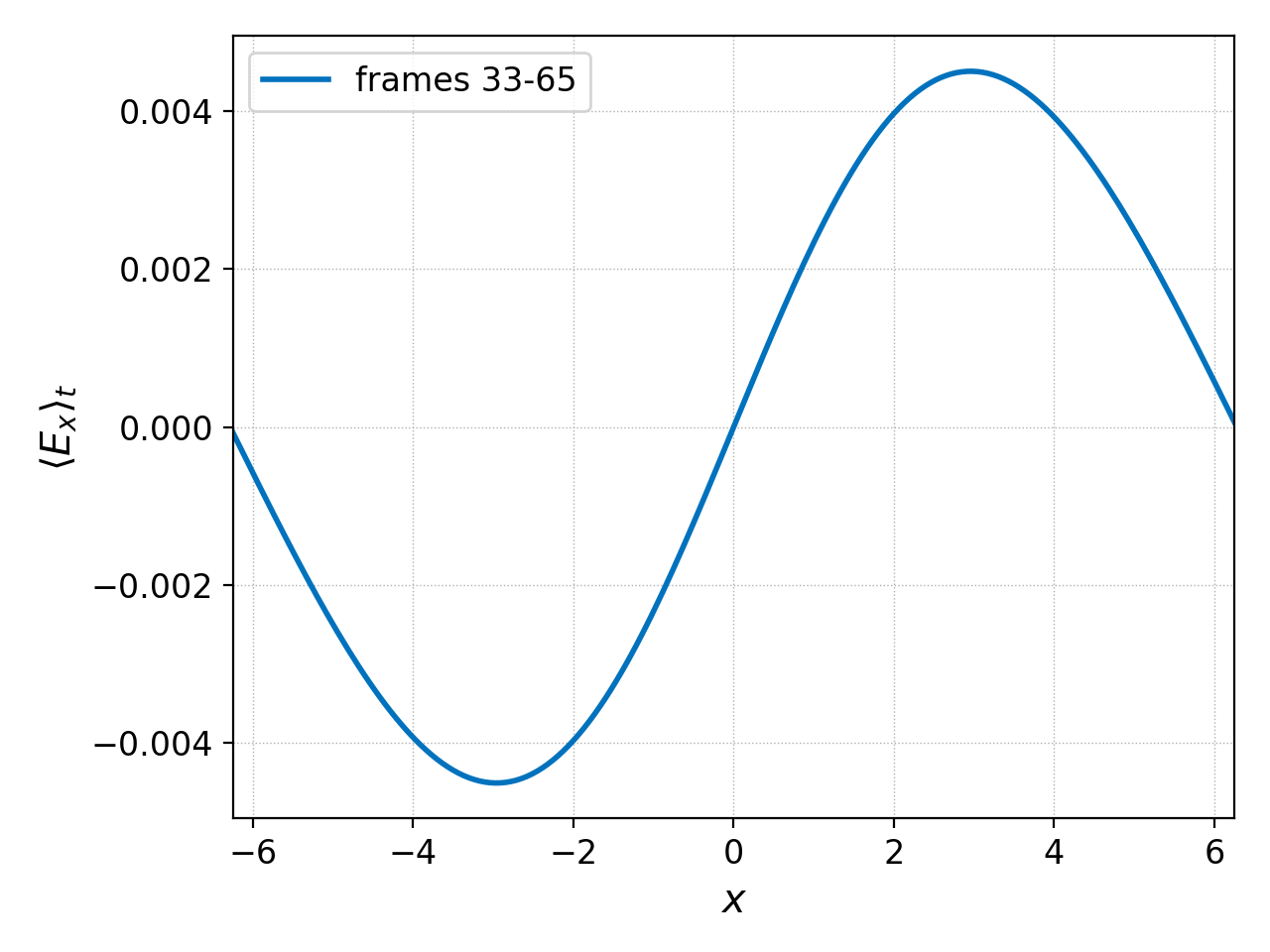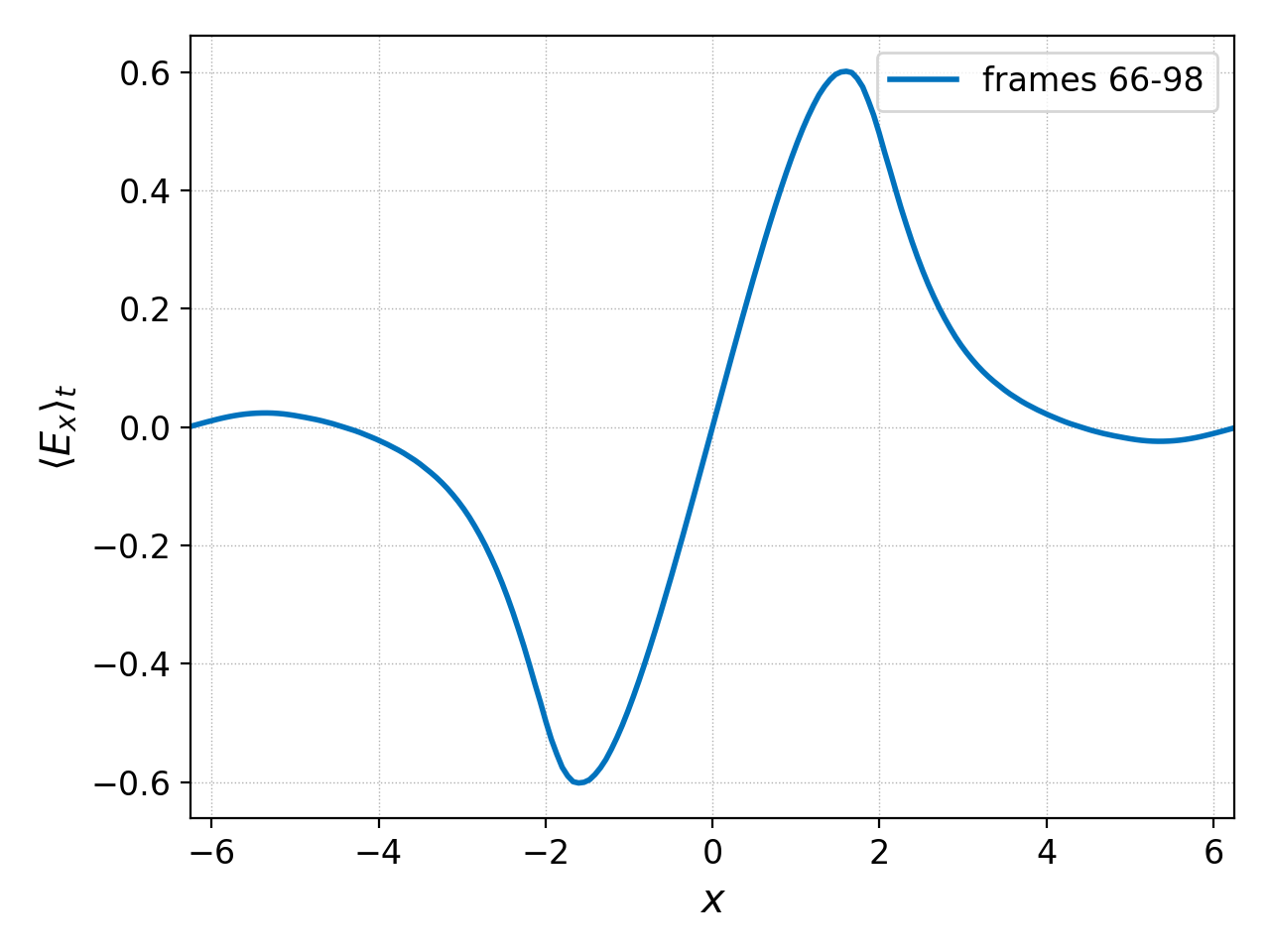collect¶
Assemble multiple active datasets into a new, single dataset.
It is also possible to collect datasets into chunks (multiple datasets) of a specified size rather than into a single dataset.
Command line¶
pgkyl collect --help
Usage: pgkyl collect [OPTIONS]
Collect data from the active datasets and create a new combined dataset.
The time-stamp in each of the active datasets is collected and used as the
new X-axis. Data can be collected in chunks, in which case several
datasets are created, each with the chunk-sized pieces collected into each
new dataset.
Options:
-s, --sumdata Sum data in the collected datasets (retain components)
-p, --period FLOAT Specify a period to create epoch data instead of time
data
--offset FLOAT Specify an offset to create epoch data instead of time
data [default: 0.0]
-c, --chunk INTEGER Collect into chunks with specified length rather than
into a single dataset
-u, --use TEXT Specify a 'tag' to apply to (default all tags).
-t, --tag TEXT Specify a 'tag' for the result.
-l, --label TEXT Specify the custom label for the result.
-h, --help Show this message and exit.
There are many uses of the collect command. One such use, for
example, is to plot quantities over time. If we consider the
two stream instability Vlasov-Maxwell simulation
we can gather the \(x\)-component of the electric field from
all frames and plot it as a function of time and space with
pgkyl "two-stream_field_[0-9]*.bp" interp sel -c0 collect pl -x 'time' -y 'x'

The field is very small at first but is exponentially growing, so in the above figure we mostly see the saturated electric field at later times.
The collect command is also able to collect datasets into chunks
of a specified length with the -c flag. So suppose we wish to
compute a time average of the electric field over three separate
periods in the two stream instability simulation (we will set
nFrame=98 in the gkyl input file for this example so there are
a total of 99 frames), we can collect the field data into three
separate datasets with 33 frames each and use the ev
command to average in time (0th dimension) as follows:
pgkyl "two-stream_field_[0-9]*.bp" interp sel -c0 collect -c 33 ev -l 'frames 0-32' 'f[99] 0 avg' \
ev -l 'frames 33-65' 'f[100] 0 avg' ev -l 'frames 66-98' 'f[101] 0 avg' activ -i102:105 \
pl -x '$x$' -y '$\langle E_x\rangle_t$'
producing the following three plots



Clearly the field amplitude averaged over 30 frame intervals is increasing as the instability develops.
Finally, collect allows a transformation of the time dimension
so that instead of time t it instead becomes (t-offset)/period
via the --offset and --period flags. This is used,
for example, in astronomy for variable stars and in creating
Poincare plots (see http://ammar-hakim.org/sj/je/je32/je32-vlasov-test-ptcl.html).